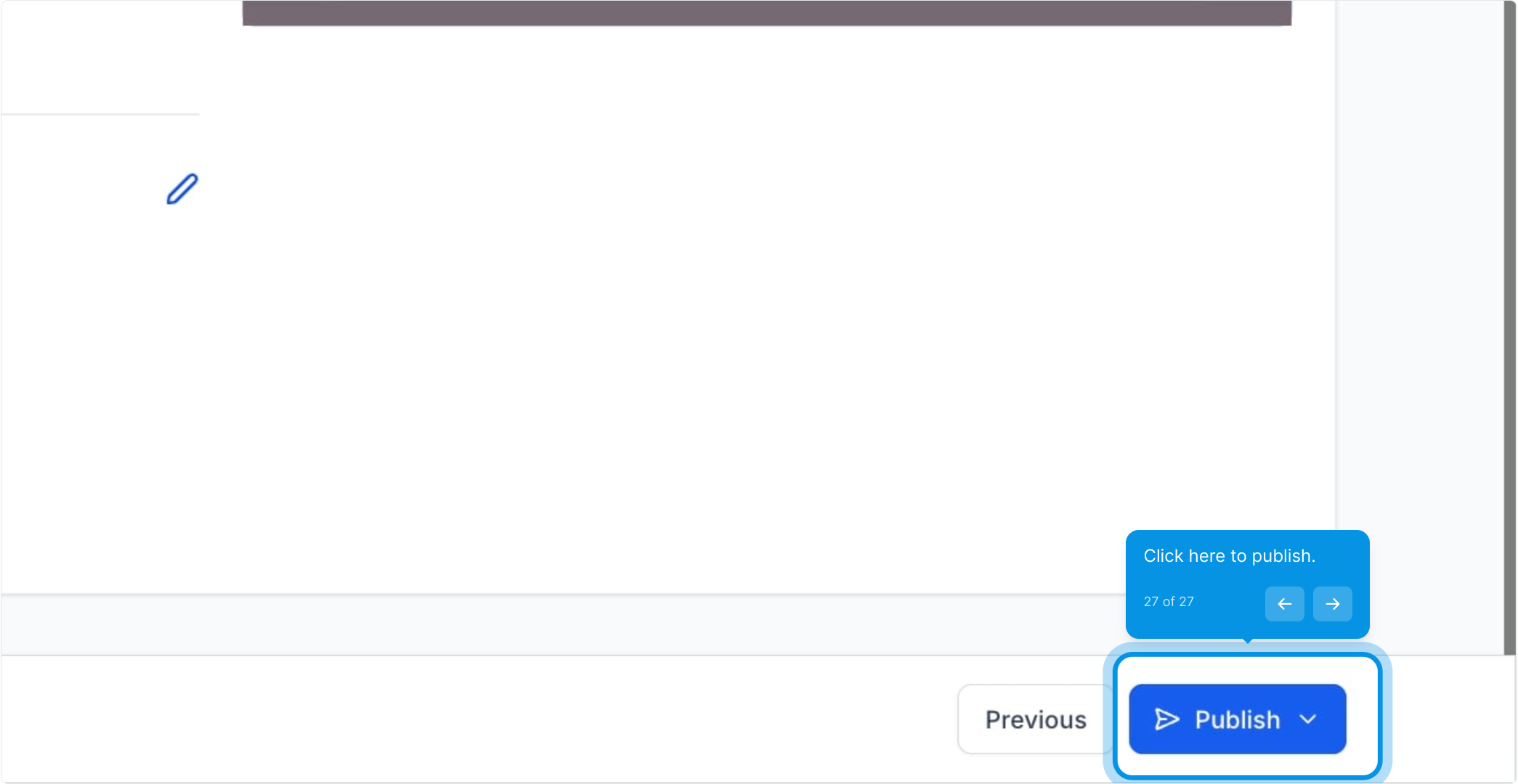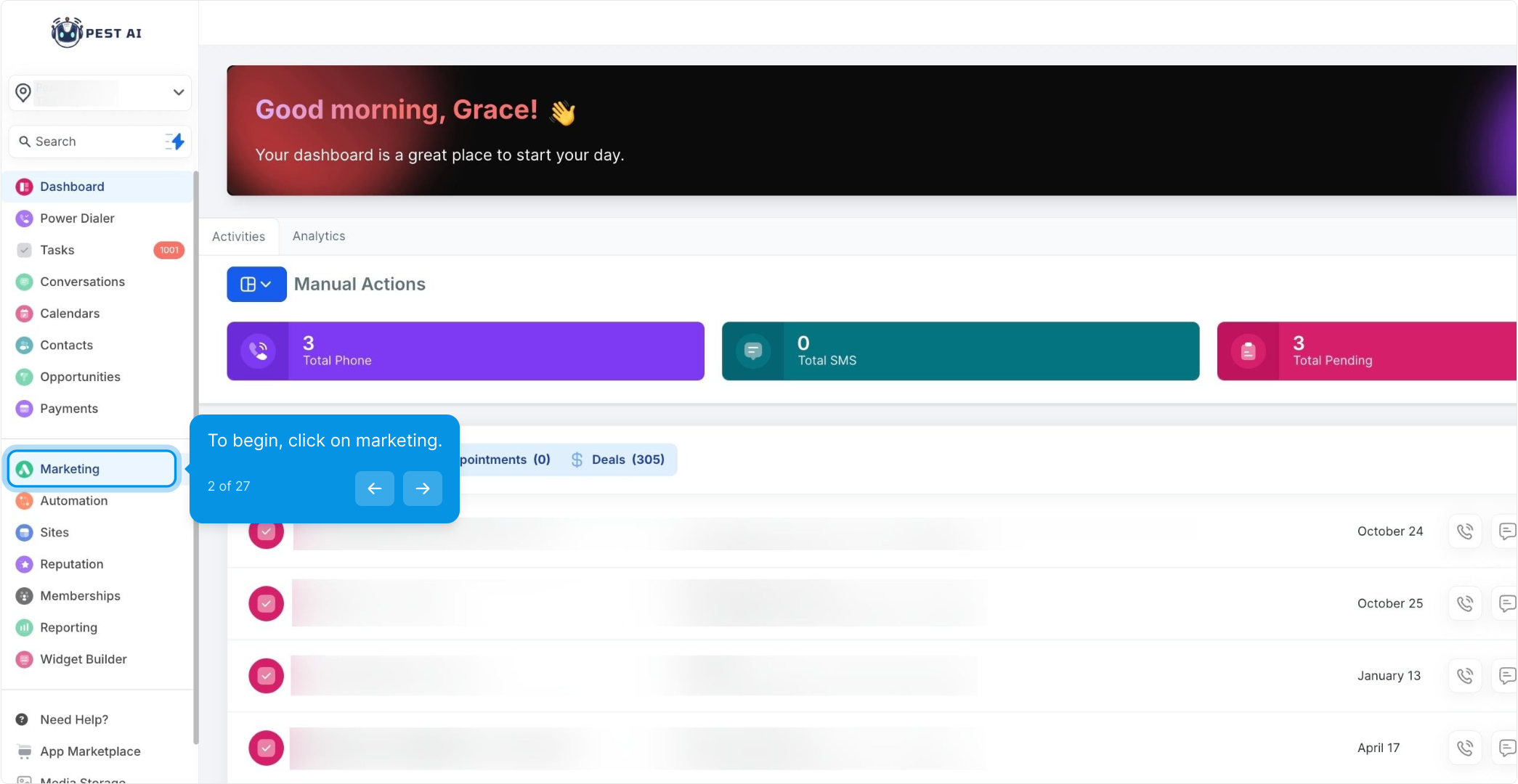

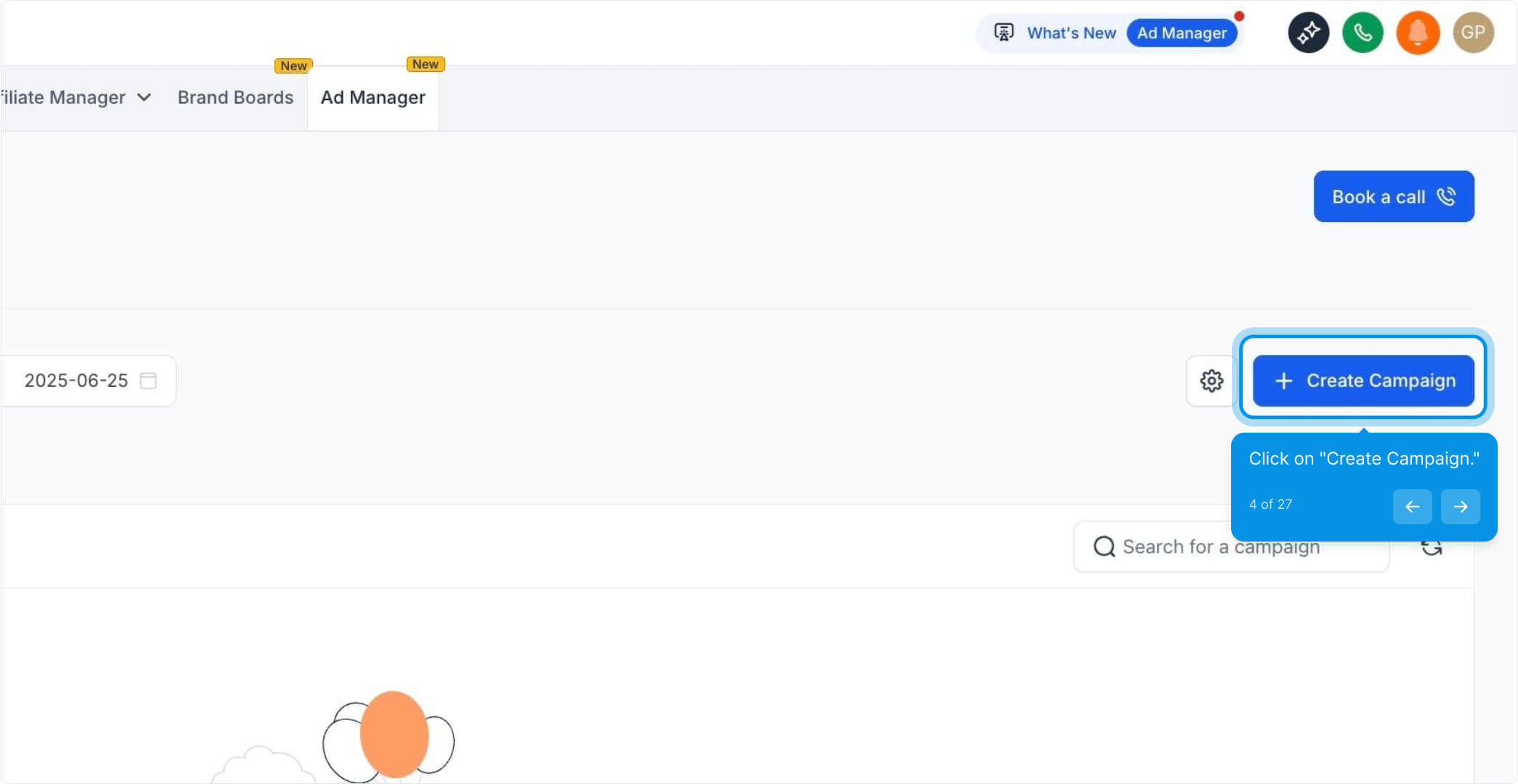
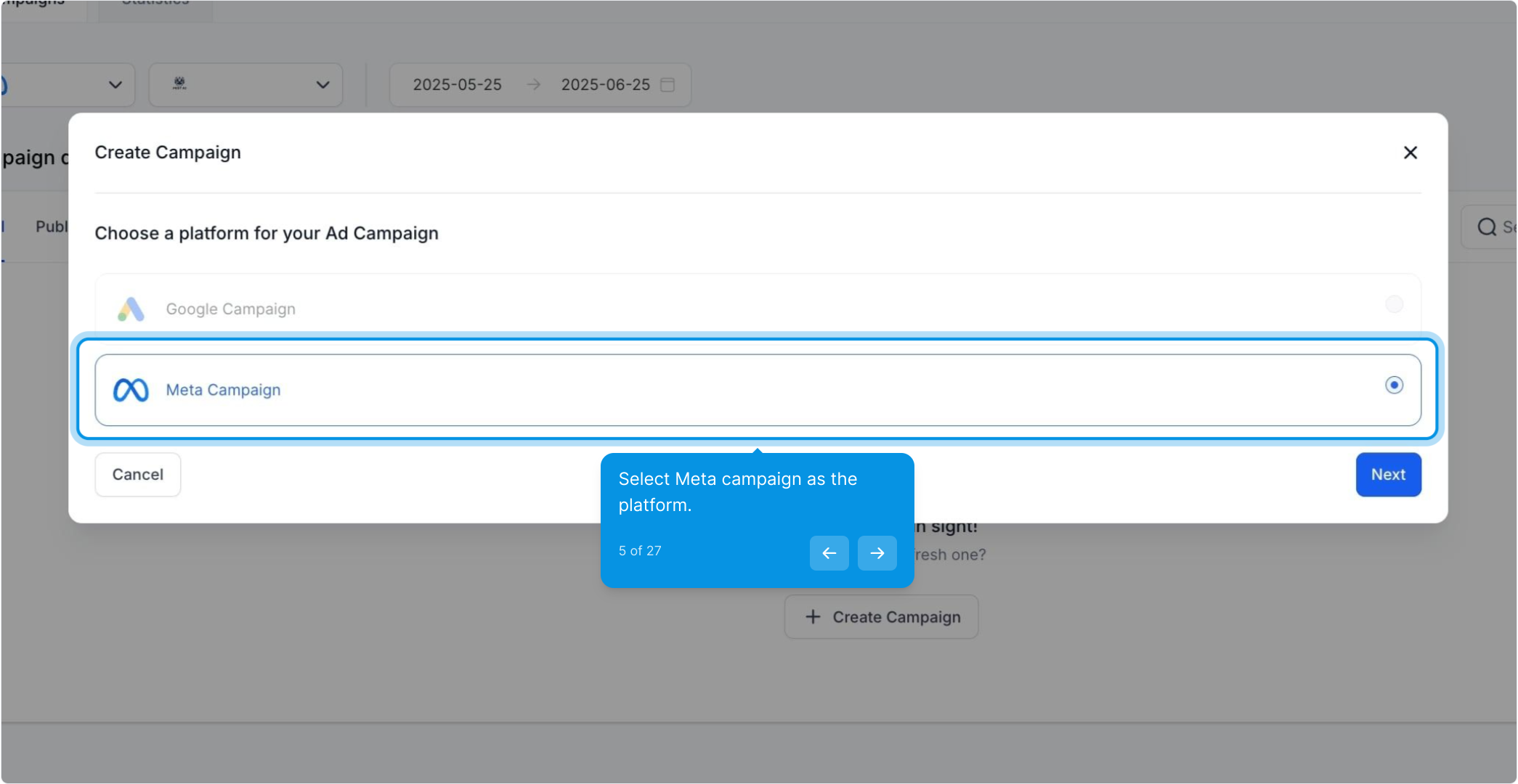
On click of 'Next' you can select to either start from scratch or use the Ad Manager templates to create a Facebook ad campaign.
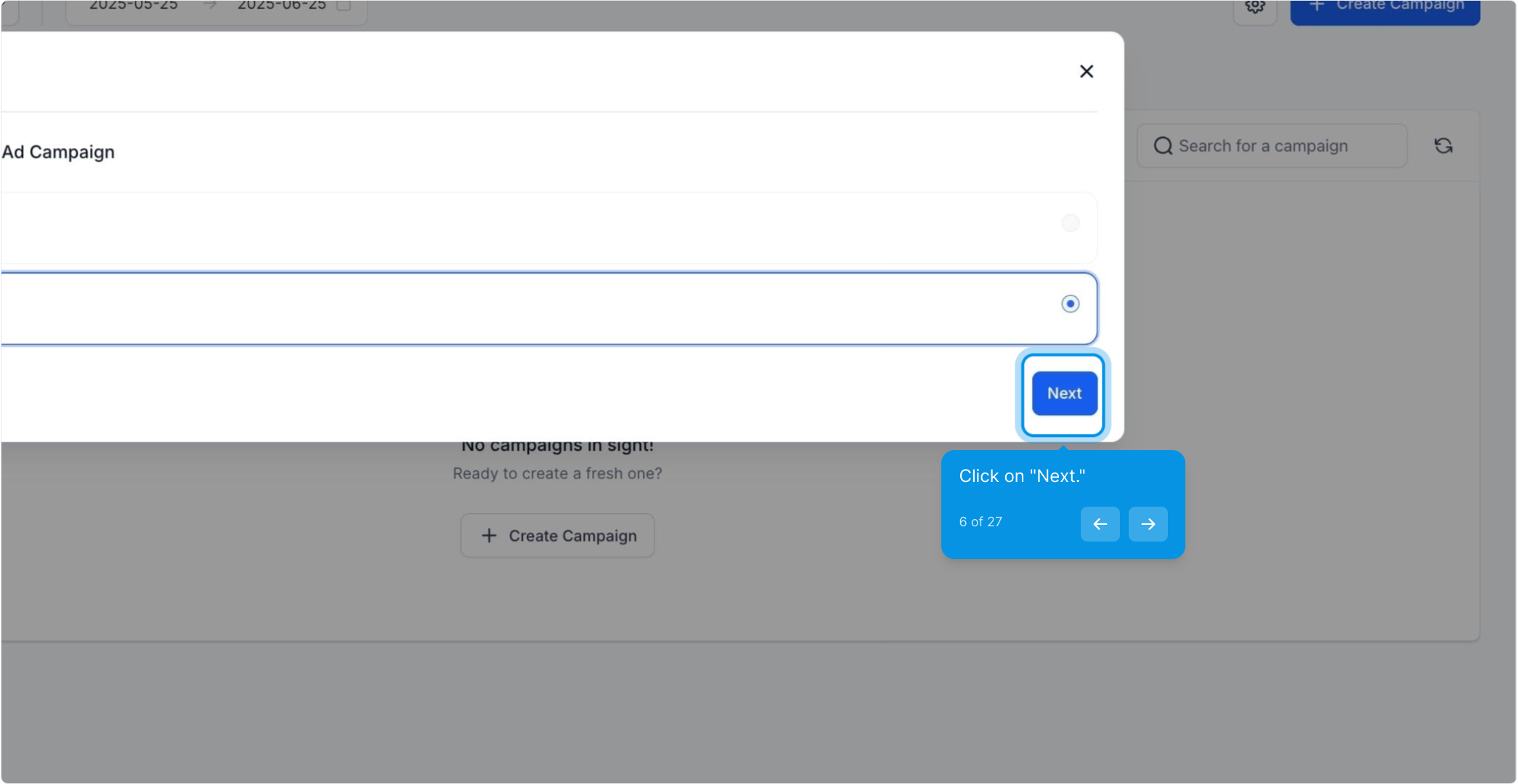
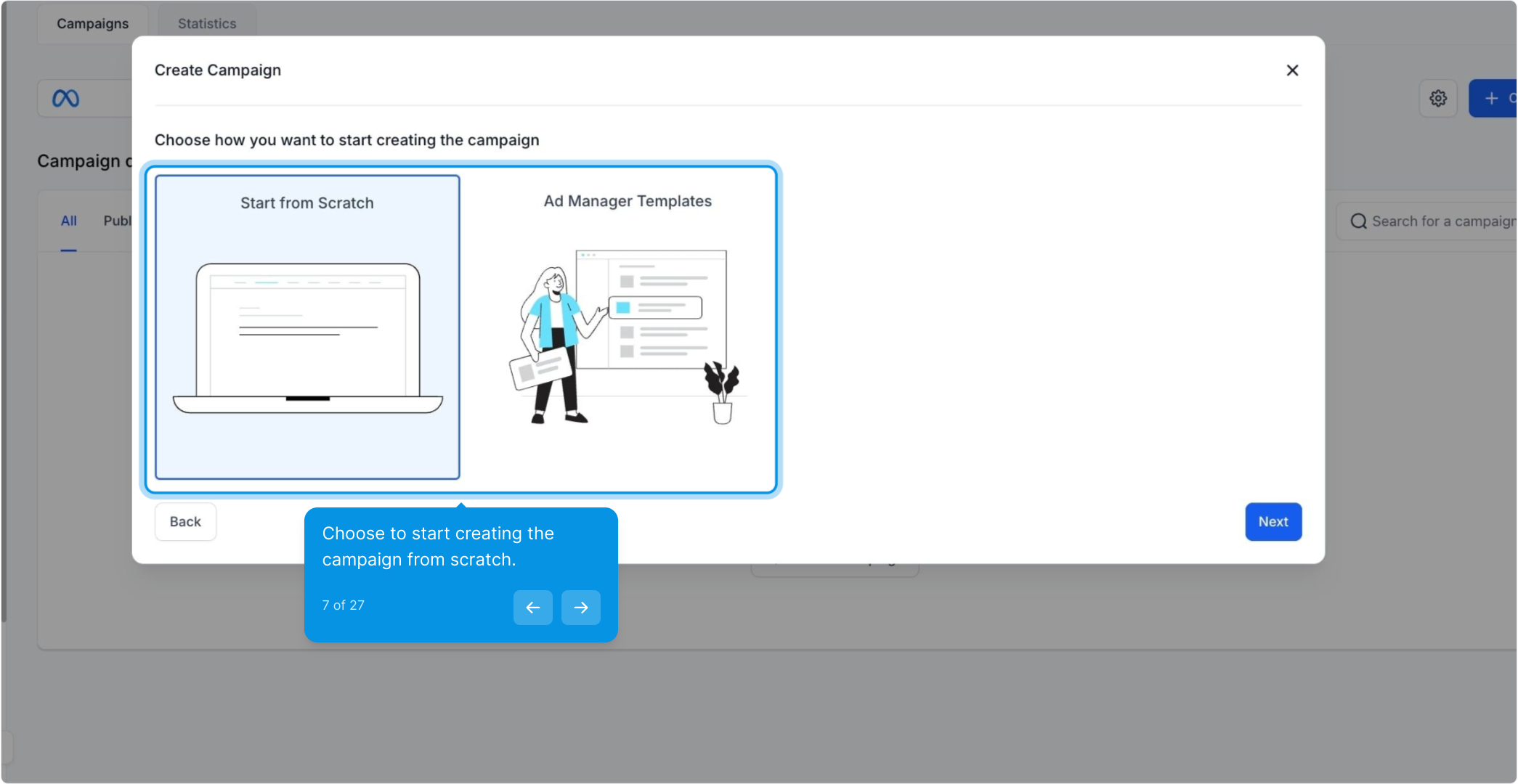
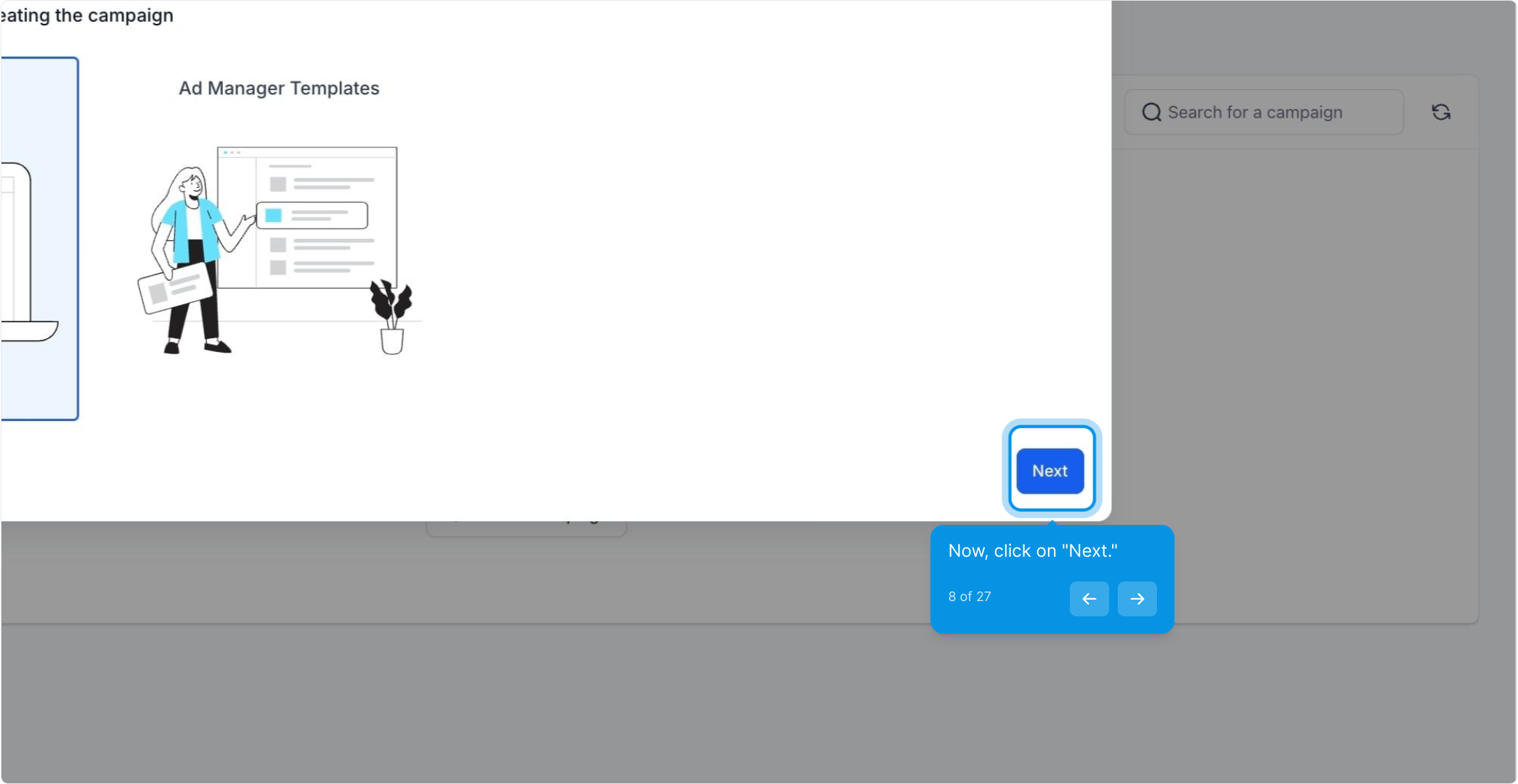
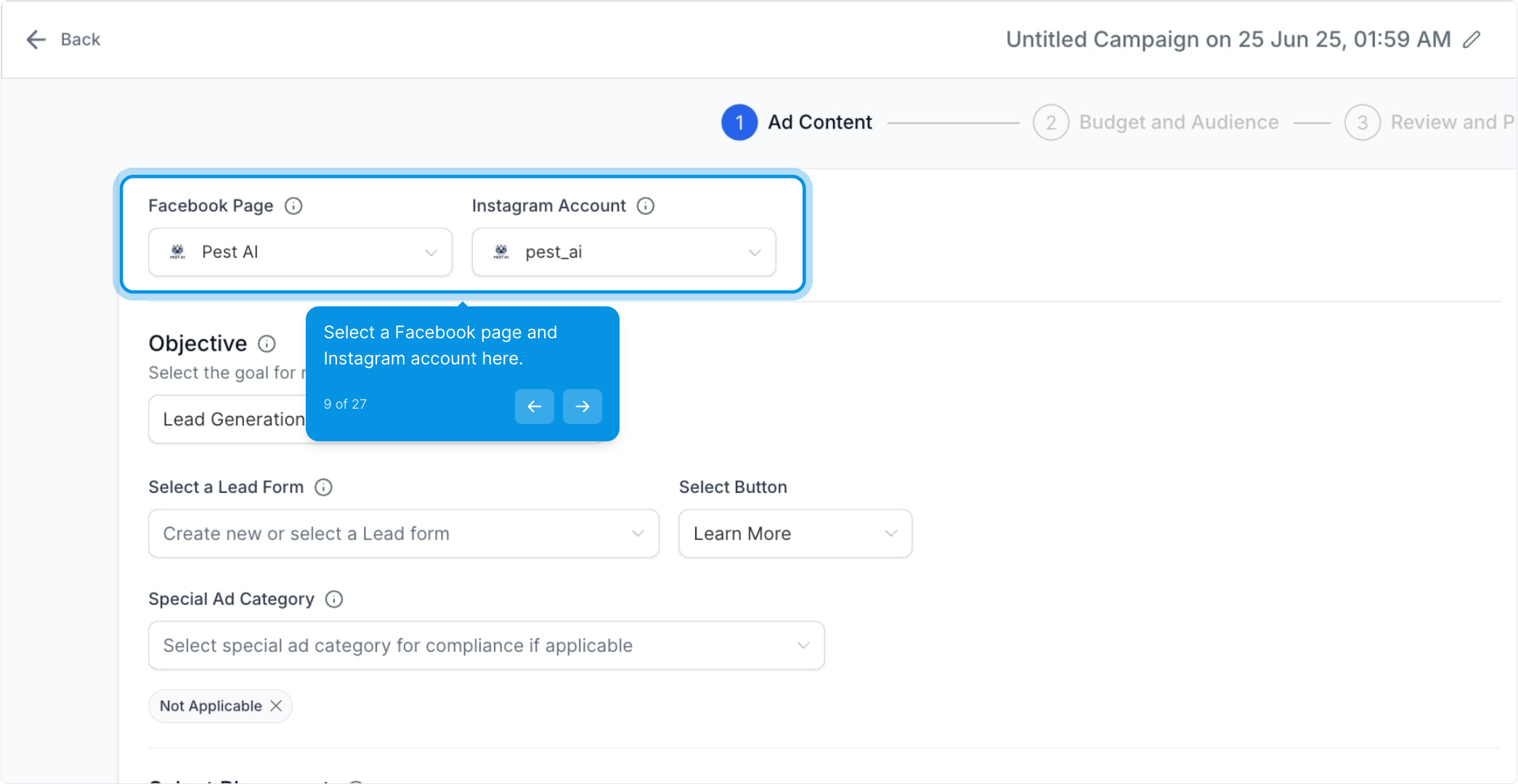
The first step to building a Facebook Ads campaign is to choose a goal that's most important for your business/brand building. Depending on the goal you choose - Lead Generation or Website Traffic.
The goal objective with Lead Generation is achieved using the Facebook form integration, the user can create their new forms or utilise the other forms.
The other objective of Website Traffic allows drive visitors to the landing page url.
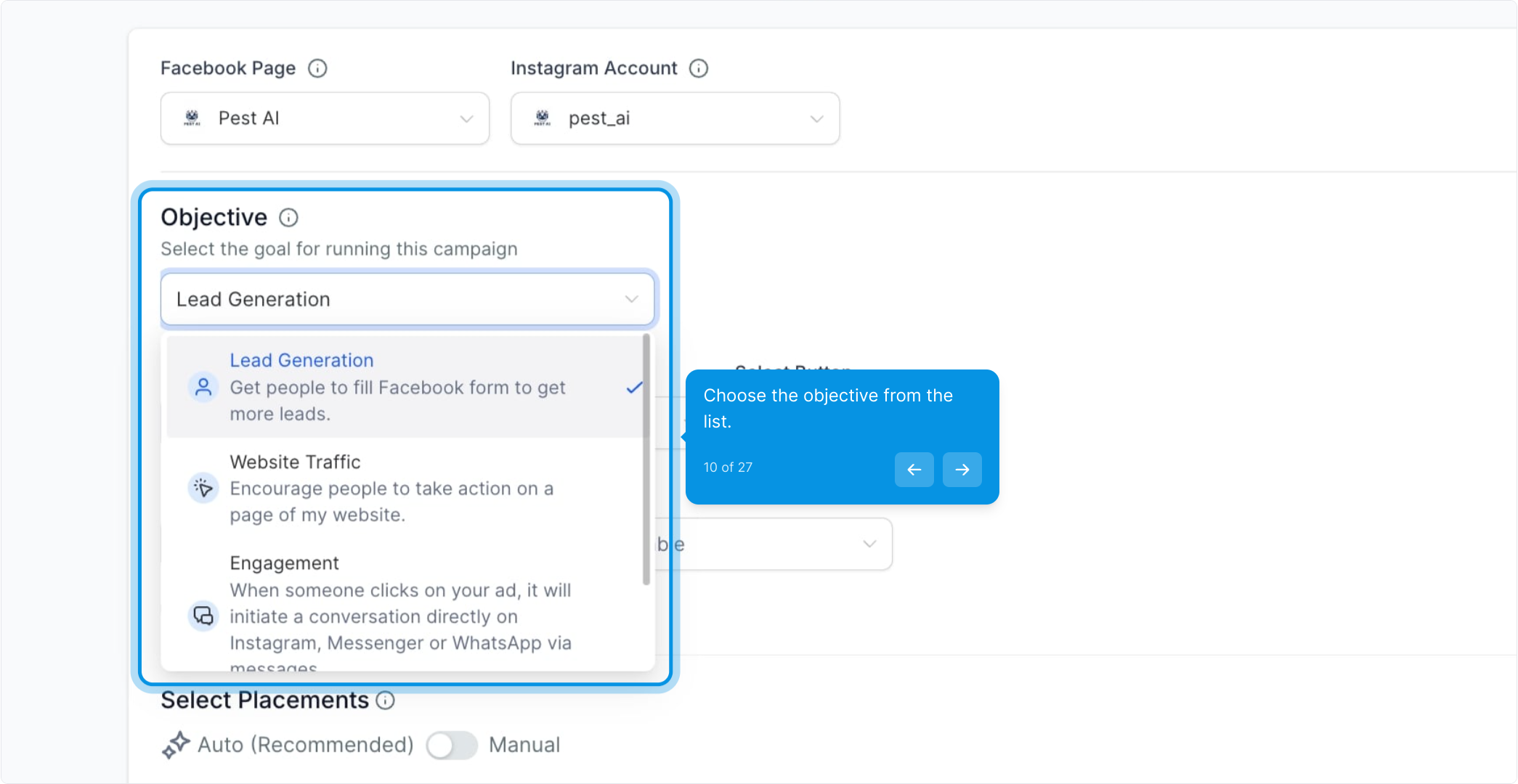

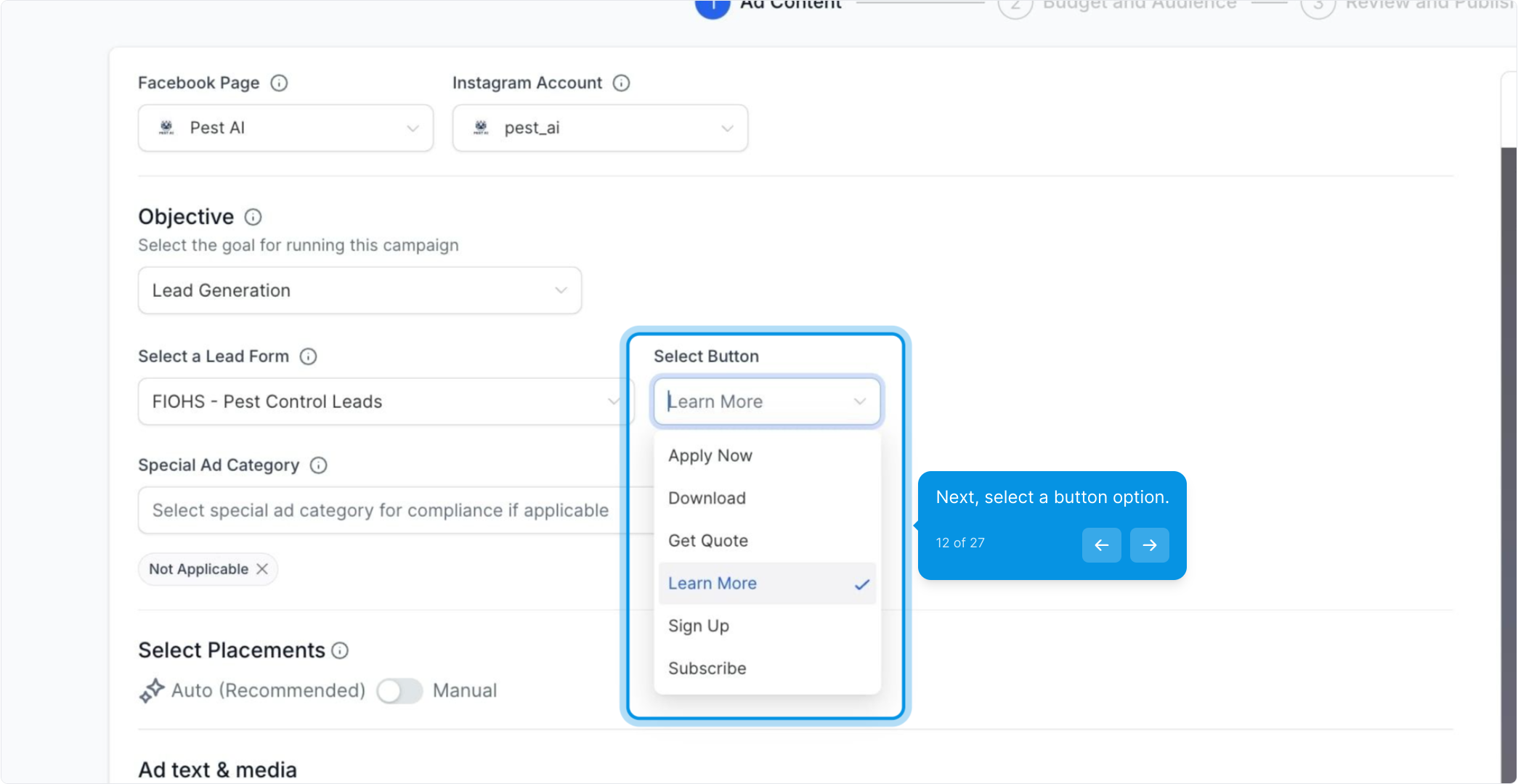
Note - If you are running an ad campaign for employment, housing, online gaming and gambling, credit and politics; it falls under special ad category, ensure to select the appropriate category from the list to comply with local laws and regulations for smooth campaign review.
Facebook's Special Ad Category has limited targeting options, including restrictions on the following audiences:
Lookalike audiences: These are not allowed for Special Ad Category ads. However, you can create a Lookalike audience outside of Facebook and upload it as a custom audience.
Saved audiences: These are not allowed for Special Ad Category ads.
Zip codes or postal codes: These are not allowed for Special Ad Category ads. If you select specific locations, they will include a minimum of a 15-mile or 25km radius.
Detailed targeting: Most demographic, behaviour, and interest options are not available.
Other restrictions for Special Ad Category ads include:
Age defaults to 18-65+ and can't be edited.
Gender includes all genders only and can't be edited.
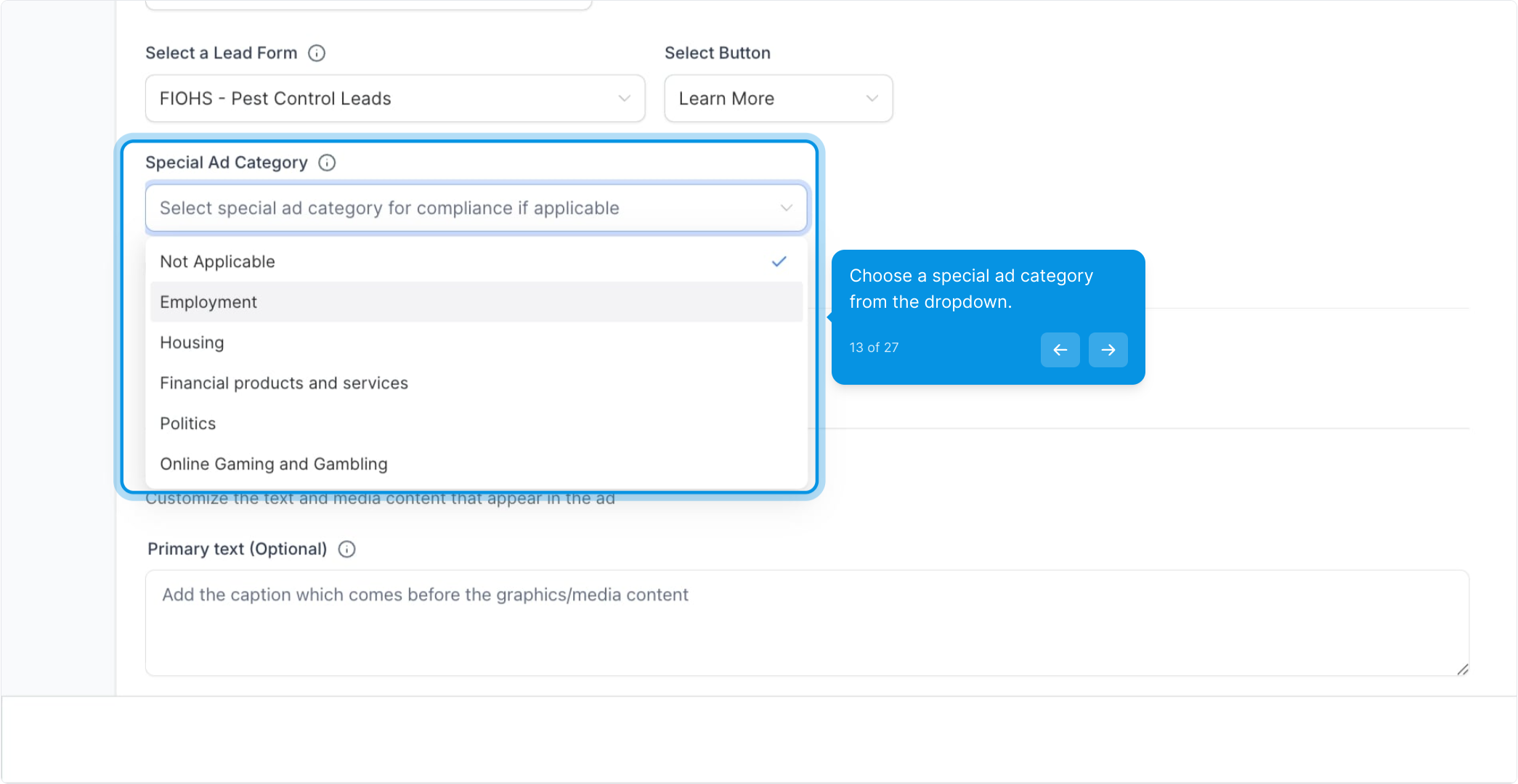
The places where you can run your ads are called placements. Automatic placements enable us to get the best results available from across all default placements based on budget allocated and help control costs. Manual placements allows user to select the places where they would like to show the ads for brand safety and optimization.
The user can enable the toggle to get the automatic placement, if the toggle is disabled it will allow you to choose the option of placements.
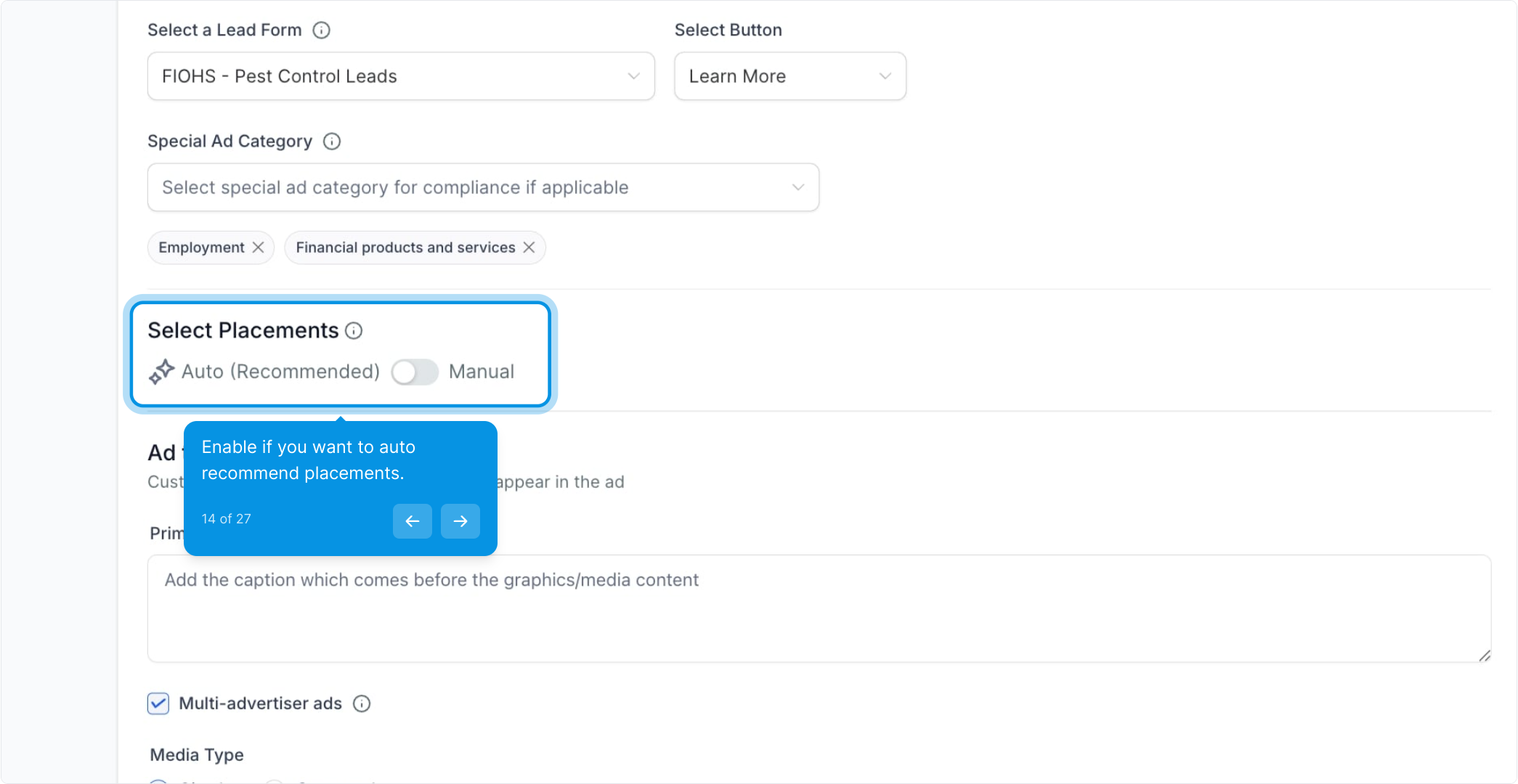
Ad Content - It will allow user to add the primary text, headline, description and media like image(s) and video(s) both in single and carousel mode.
Primary text is optional, the recommended character is 125 characters
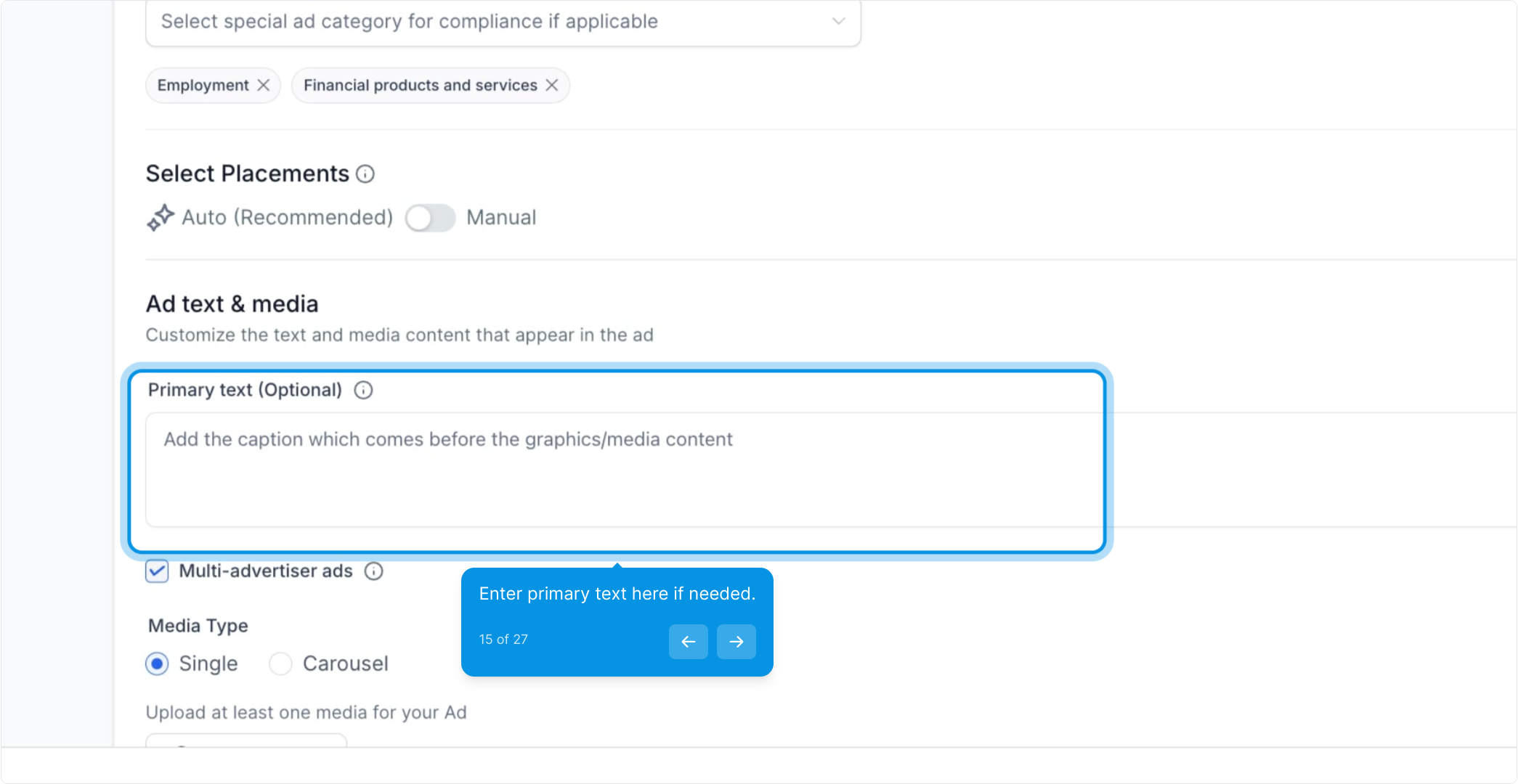
Multi-advertiser ads:
These ads in Meta are a type of advertising format that allows multiple advertisers to showcase their products or services within the same ad space. This checkbox is checked by default and can be turned off by the publisher. An explanation on how it works is mentioned below:
When a potential shopper interacts with an ad, a multi-advertiser carousel may appear below it that displays products from other businesses. The products in the carousel are usually related to the ad that the user engaged with.
Using this can results in increased reach, cost efficiency and cross promotion amongst other benefits.
Note: Multi-advertiser ads may not be a fit for all types of campaigns, especially if there’s a need for clear brand separation or unique messaging for each business.
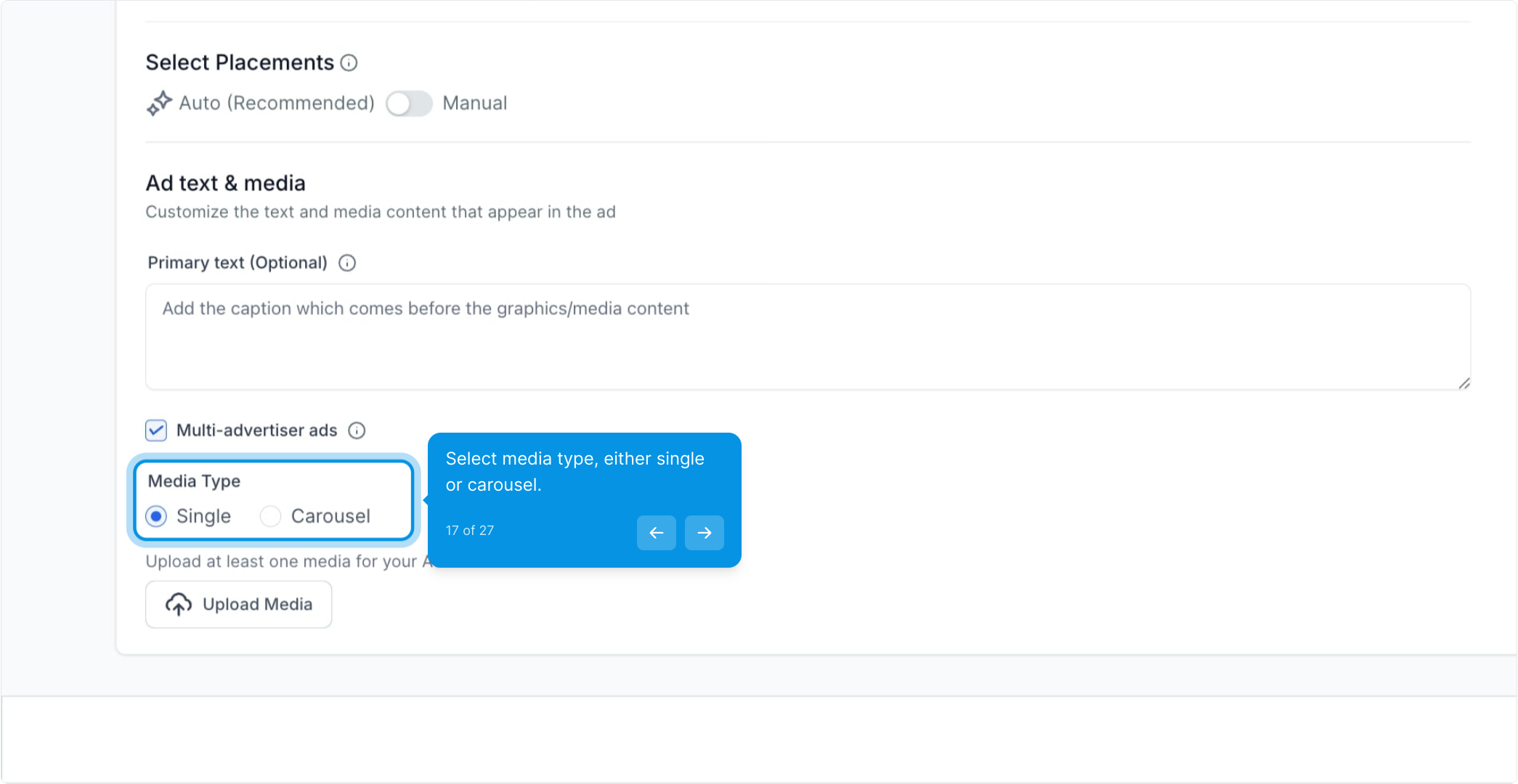
Images are allowed up to 8MB and Video are allowed upto 1GB.
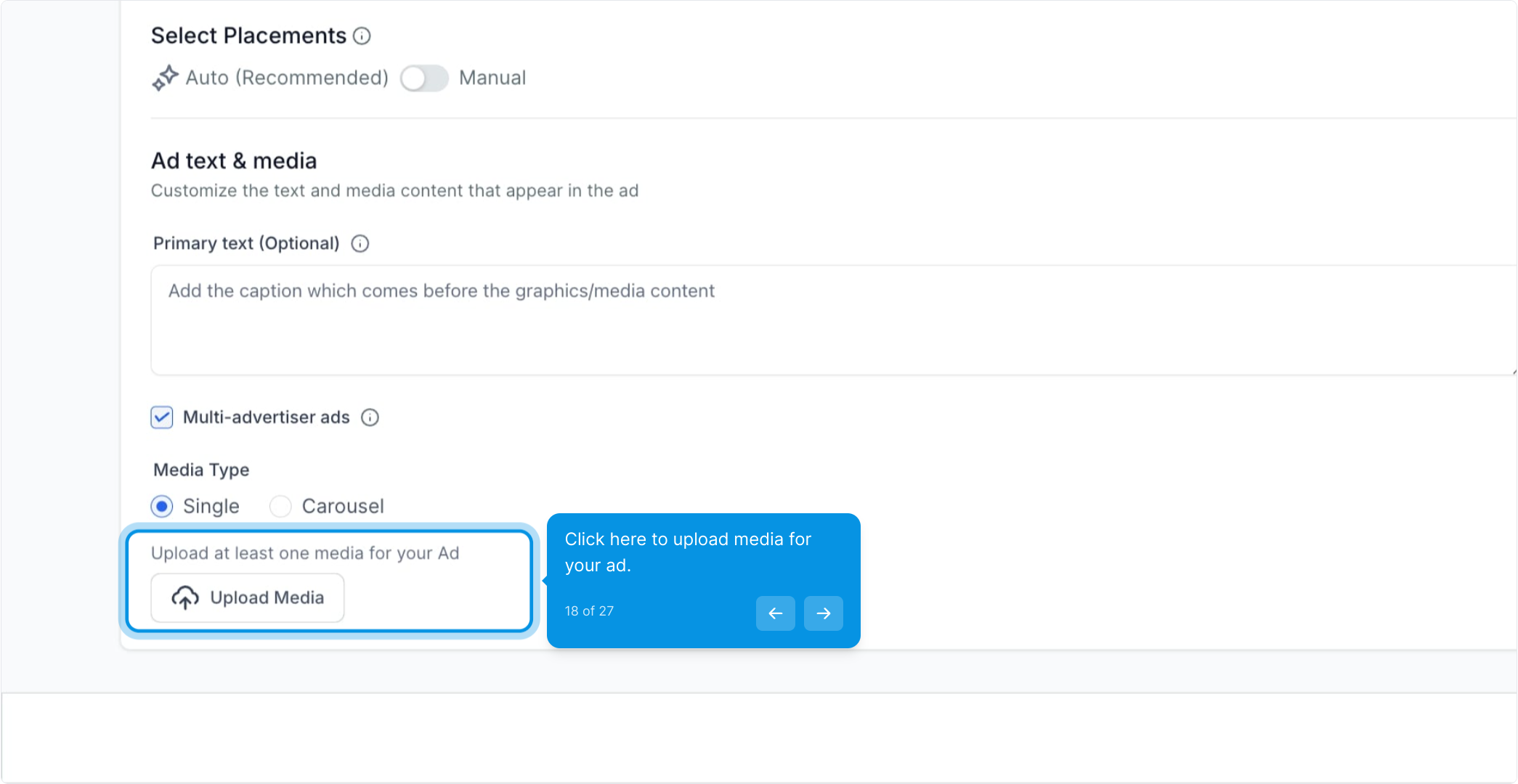
Headline is required field for ad campaign, the recommended character is 40 characters
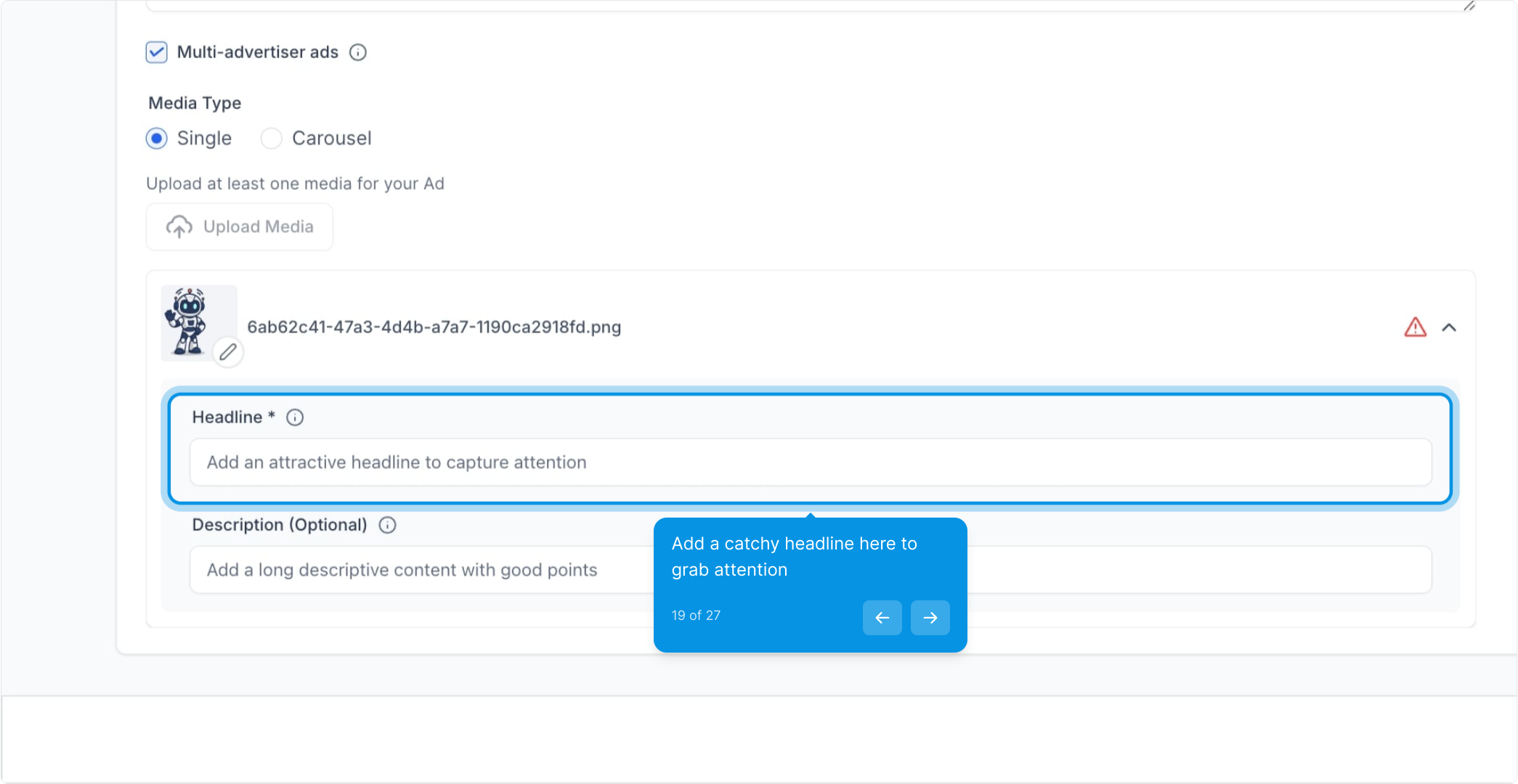
Description is optional, the recommended character is 30 characters.
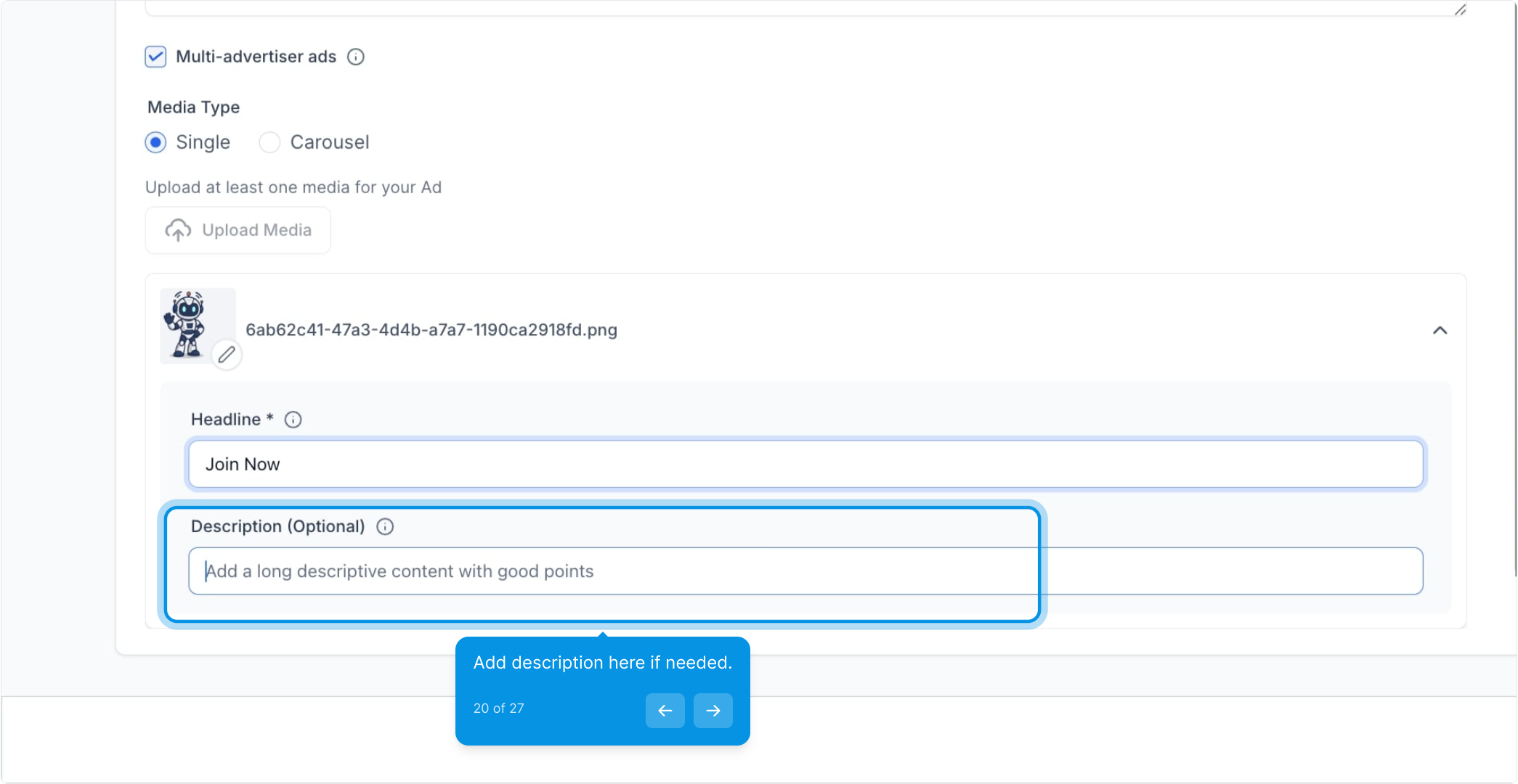
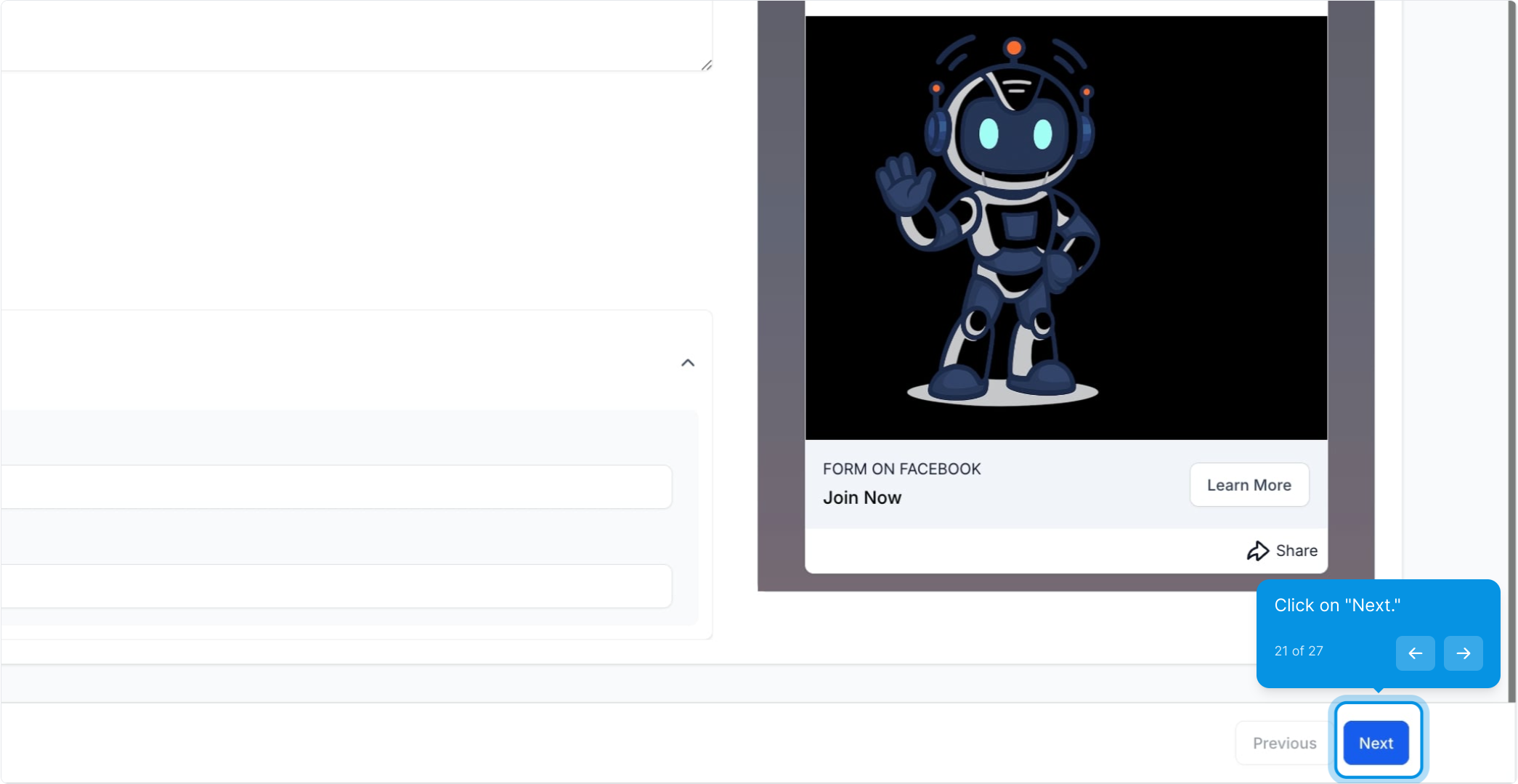
The campaign manager can setup a daily or monthly budget for the campaign, this will work as subscription and is charged from the card associated with the connected Meta Ad account. The budget will show each day division for daily budget and the overall budget for lifetime along with the start and end date. Monthly budget can be increased or decreased by pausing and editing a campaign.
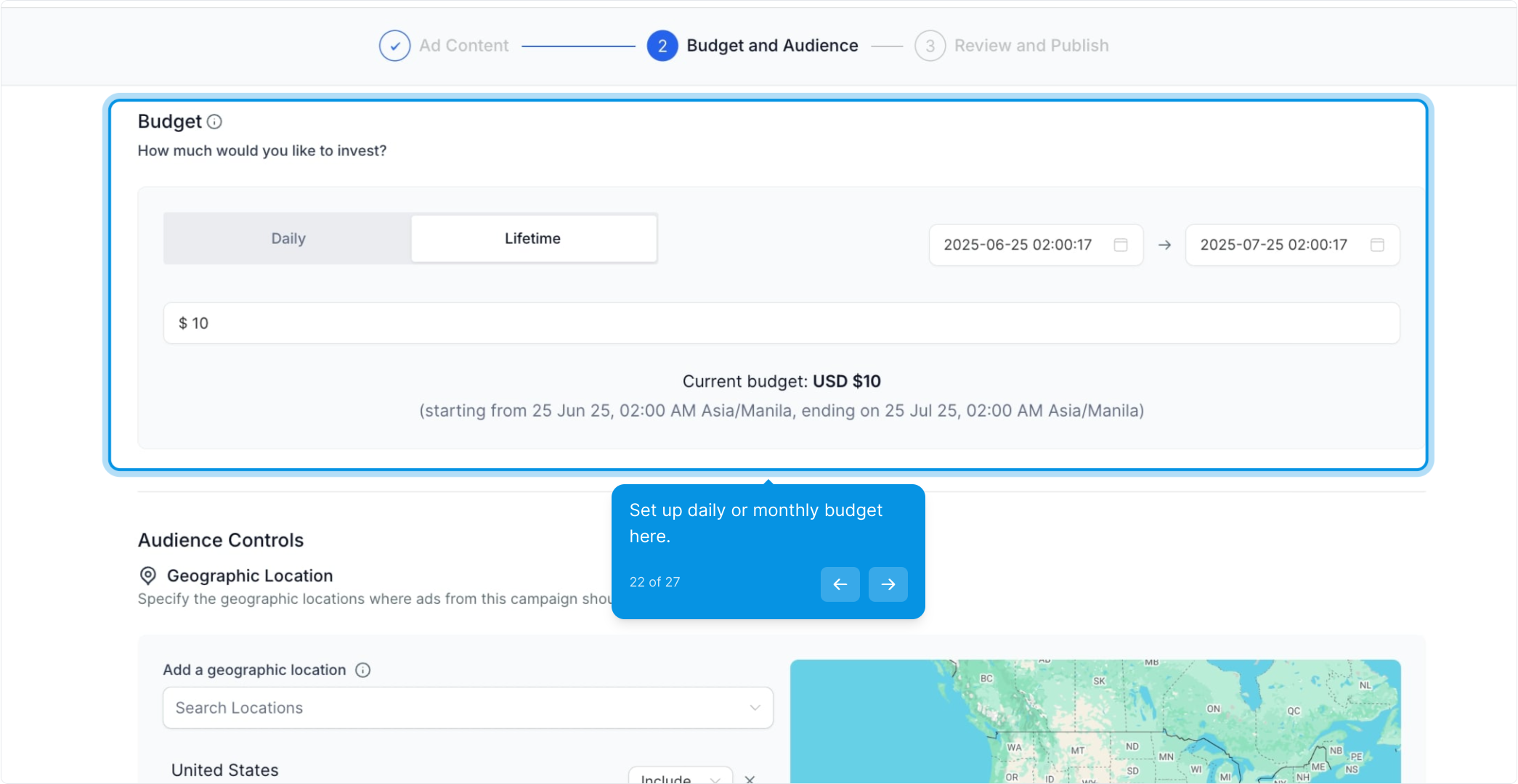
Campaign can be adjusted to run for specific location or can exclude a specific location in certain country/state.
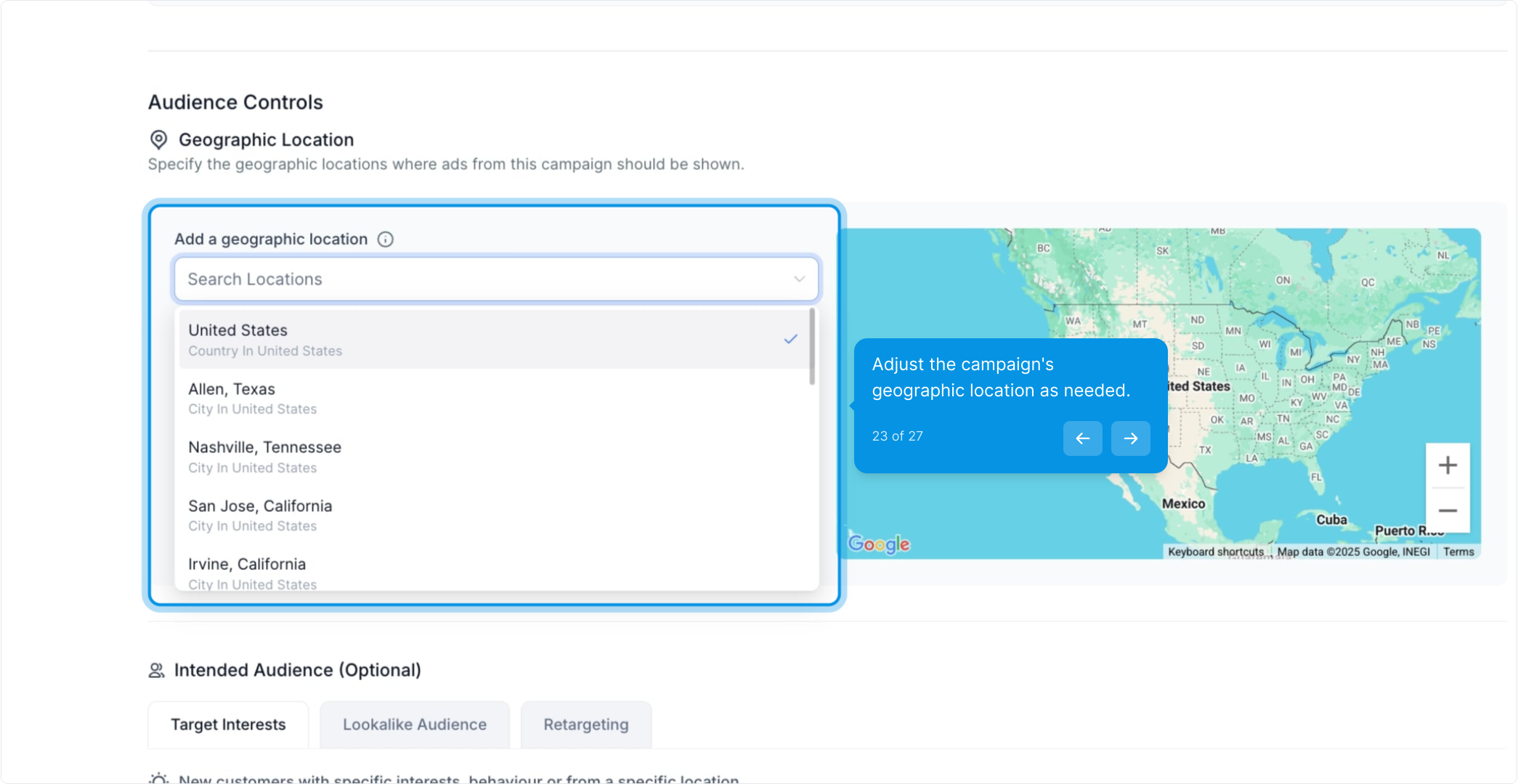
Optional Settings of Intended Audience can be defined to narrow down the audience - The user can add more specific setup for each option.
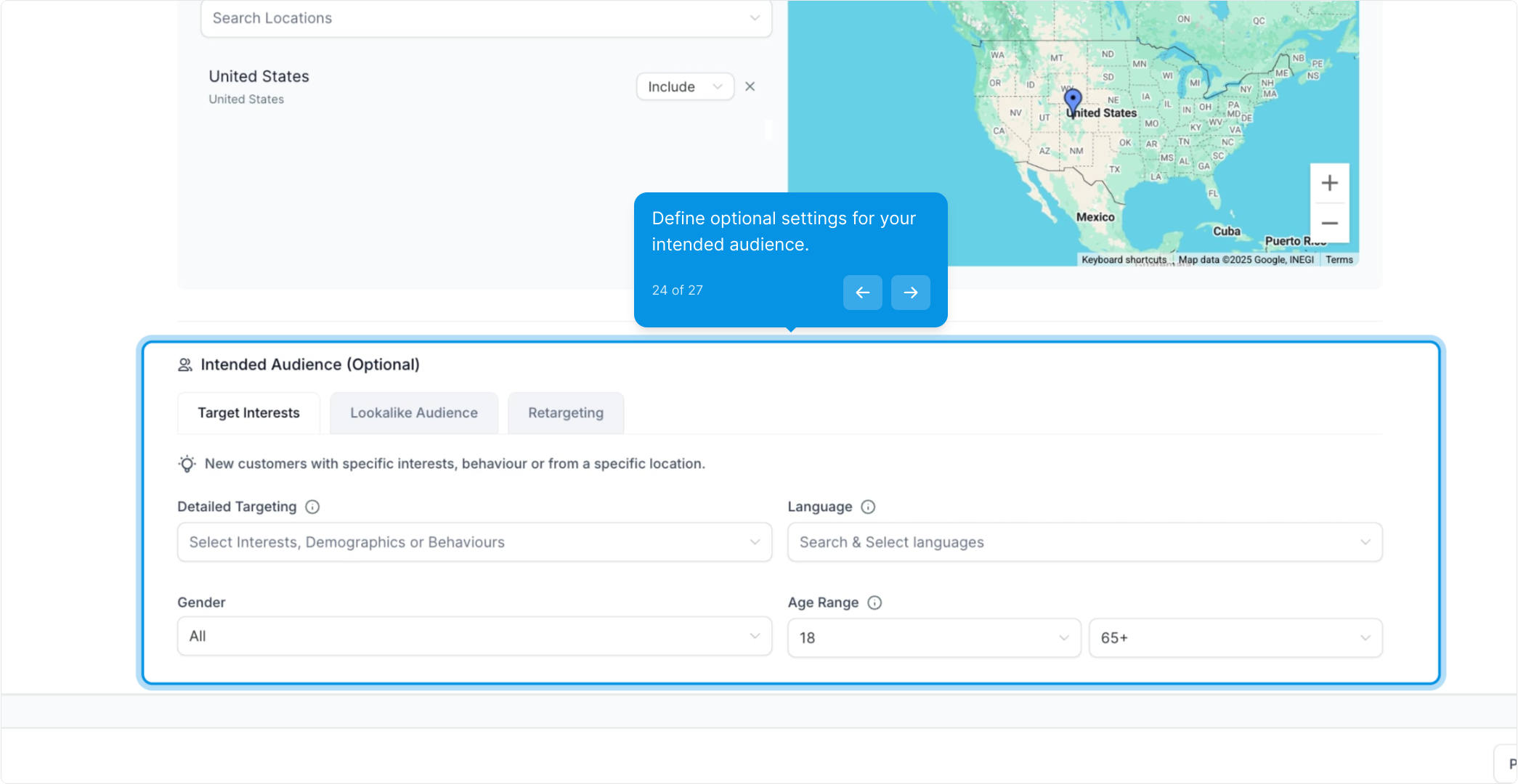
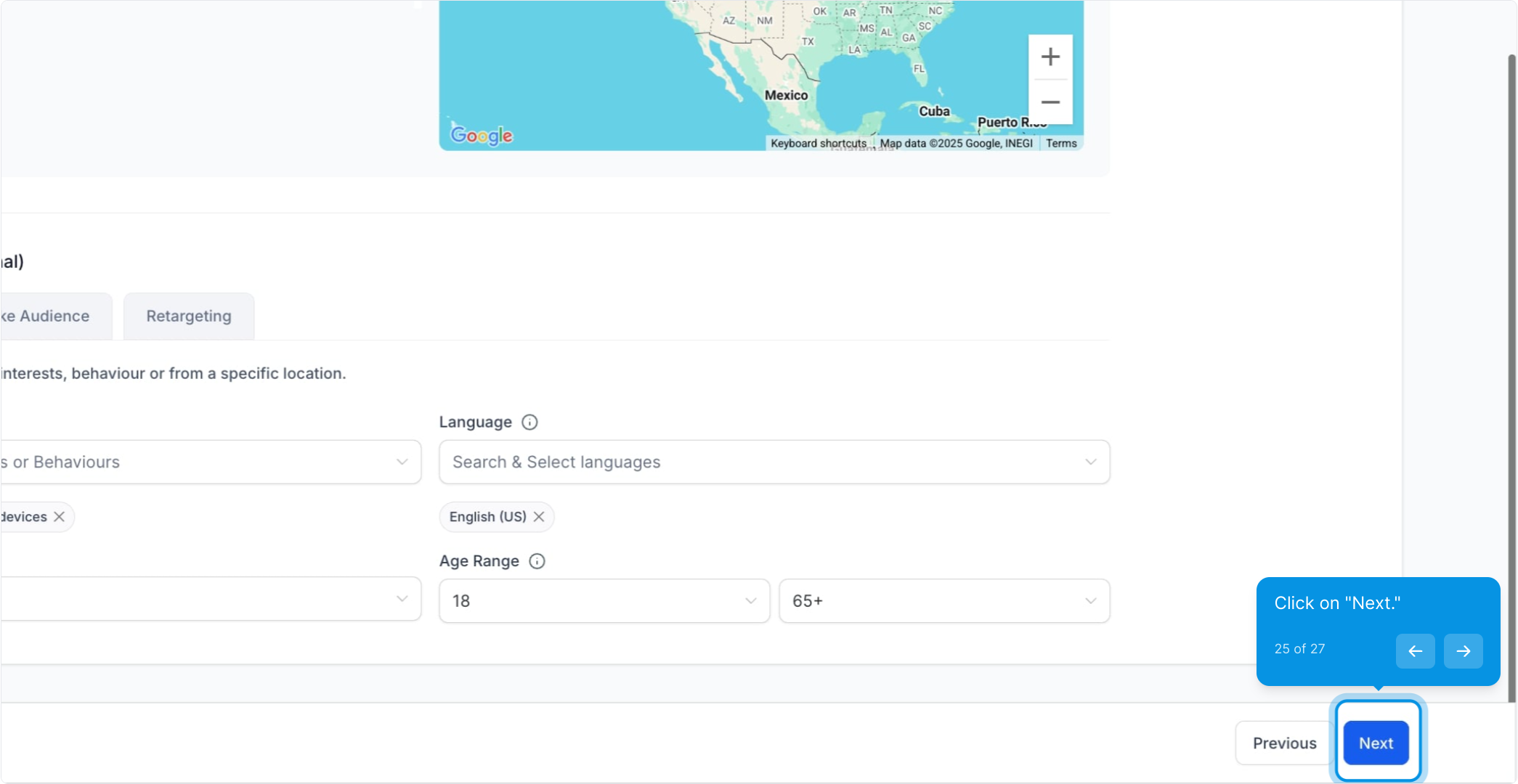
Once the campaign is in review stage, you can verify all the details of aesthetics, media, content, budget and other options before taking your campaign live.
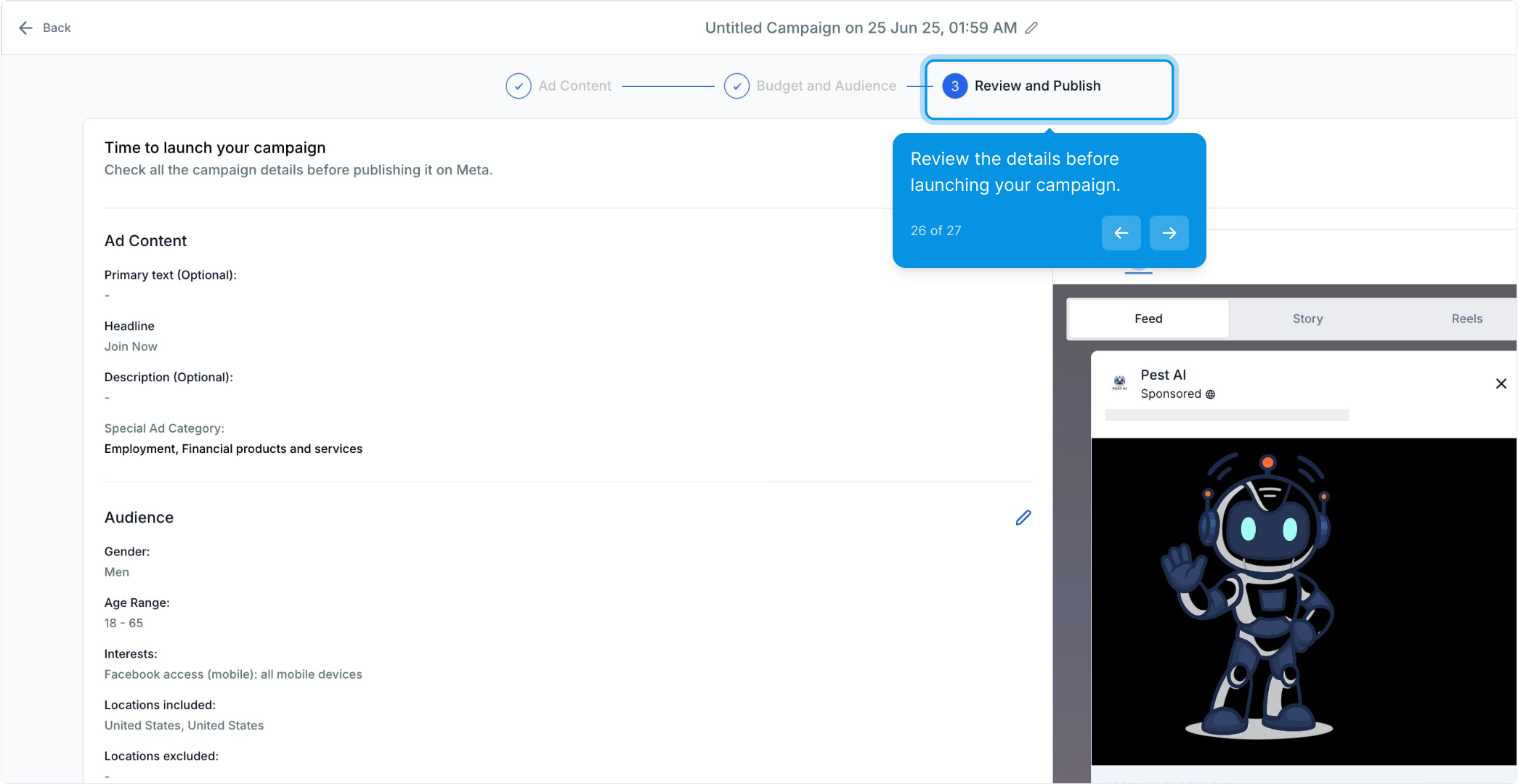
After the last 3 steps are completed, the Ad Campaign on clicking the publish option will charge the card added with Meta on the connected Ad account.
